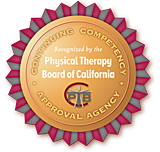
Learning The Method
MNRI® Archetype Movement Integration
Watch our brief introduction video for this course:
Course Overview:
Archetype Movement Program techniques work to activate and engage archetype movements that, for various reasons, have remained dormant in the body. Archetype movements, less complex in nature than motor reflex patterns or schemes, are among the first reflexive movements to develop and emerge. Once engaged, archetype movements remain present and active in the body, allowing normal range and flexibility of motion while providing support, balance, and stability for the upper and lower, left and right, and front and back parts of the body. Archetype motor movements also play a subordinate role in the maturation and integration of progressively more complex reflexes, including primary motor reflex patterns, motor reflex schemes, and the development of learned motor skills. If an archetype movement is not appropriately engaged, its impact can be great given the subordinate role it plays in maturation and development. We encourage parents and professionals interested in learning more about the MNRI Method and its various programs to attend this course early on, given the fundamental role it plays in overall development.
The MNRI® Archetype Movement Integration course explores:
- The general MNRI Method and the role played by the Archetype Movement Program
- The progression of motor movements beginning in utero and continuing through life
- Archetype motor movements and how they relate to primary motor reflex patterns and important coordination systems
- The role archetype motor movements play in establishing a foundation for motor, communication and cognitive development, and emotional and behavioral regulation
- MNRI techniques designed to assess and facilitate the maturation and integration of archetype motor movements
- How to create MNRI archetype maturation programs for individual clients
- How to incorporate use of the MNRI Archetype Motor Movement course content into daily client and home practice
Learning Objectives: MNRI® Archetype Movement Integration
1. Discuss the innate nature of the sensory-motor reflex system and the general principles of the Masgutova Method®.
2. Explain the role of a reflex and its sensory, motor, and central nervous system mechanisms for neurodevelopment.
3. Differentiate the progression of primary movements beginning in utero and continuing through life.
4. Summarize the role the Archetype movements play in establishing a foundation for motor, cognitive, emotional, and behavioral regulation.
5. Discuss (or Explain) the structure, pattern, and effect on brain functioning of the eight Archetype motor patterns, as well as their effect as change agents on the physical, emotional, social, and cognitive development of the client.
6. Describe and implement the MNRI® Archetype passive and active integration techniques.
7. Apply direct, hands-on instruction of the restoration and integration exercises, including sensory, sensory-motor, and motor modality for each of the eight archetypal movements.
8. Discuss the three body structural planes and motor coordination systems (MCS; sagittal, horizontal, and dorsal) and how the eight archetypal movements affect the specific reflex development in each MCS.
9. Explain different techniques for creating an individual program for clients and home practice activities by incorporating the eight archetypal movements.
Course Agenda:
Hour 1: Movement as basis of Natural Development
Hours 2-3: Masgutova Method ® of Neurosensorimotor Reflex Integration and Archetype Movements
Hour 4: Primary and natural movements; the Archetypes of movement development
Hours 5-6: Developmental mechanism of Infant Reflexes and connection to the self-regulation of the body-mind system
Hours 7-8: Archetype Movements, patterns and reflexes
Hours 9-11: Movements of the body
Hours 12: Natural flow of intentional and controlled movements
Hours 13-14: Individua program development
Hours 15-19: Archetype Movement and Infant Reflex Patterns
Hours 20-21: Archetype Movements and the development of lifelong reflexes
Hours 22-24: Current research, review, and question/answers





